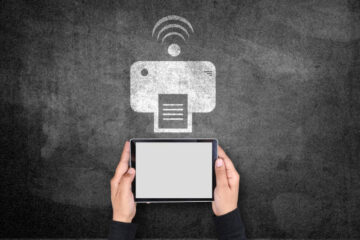Enhancing your laptop’s connectivity is essential for improving productivity and ensuring seamless workflow. A USB-C hub is a powerful tool that can expand the capabilities of your laptop, allowing you to connect multiple devices simultaneously. From external monitors to keyboards, mice, and storage devices, a USB-C hub provides the versatility you need. This guide will walk you through the importance of a USB-C hub, the features to look for, how to set it up, and common troubleshooting tips.
Why Do You Need a USB-C Hub for Your Laptop
What Problems Does a USB-C Hub Solve?
A USB-C hub addresses the common issue of limited ports on modern laptops. Many new laptops, especially ultrabooks, come with minimal ports, making it challenging to connect multiple peripherals at once. A USB-C hub solves this problem by providing additional ports, such as USB-A, HDMI, and SD card slots, all through a single USB-C connection. This expansion allows users to connect external monitors, USB drives, and other devices simultaneously, enhancing the laptop’s functionality and convenience.
How Can a USB-C Hub Enhance Productivity?
A USB-C hub significantly boosts productivity by allowing for a more efficient and organized workspace. With the ability to connect multiple devices, you can quickly switch between tasks without constantly plugging and unplugging cables. For example, connecting an external monitor enhances multitasking capabilities, enabling you to work on multiple applications simultaneously. Additionally, having a keyboard and mouse connected through the hub provides a more ergonomic setup, reducing strain and increasing comfort during long working hours.
What Devices Can You Connect with a USB-C Hub?
A USB-C hub offers compatibility with a wide range of devices, making it a versatile tool for any laptop user. You can connect external monitors via HDMI, VGA, or DisplayPort, enhancing your screen real estate. USB-A ports allow you to attach peripherals such as keyboards, mice, and external storage devices. Many hubs also include SD and microSD card readers for quick access to memory cards. Ethernet ports can provide a stable wired internet connection, which is particularly useful in environments with unreliable Wi-Fi.
What Features Should You Look for in a USB-C Hub?
When selecting a USB-C hub, several key features can enhance your experience. First, consider the number and type of ports available. Ensure the hub includes the necessary ports for your devices, such as HDMI for monitors, USB-A for peripherals, and SD card slots for memory cards. Power delivery (PD) is another crucial feature, allowing the hub to charge your laptop while in use. This is especially important for laptops with only one or two USB-C ports, as it ensures you don’t have to sacrifice charging for connectivity. Additionally, look for a compact and portable design that fits easily in your bag, making it convenient for travel or remote work. High data transfer speeds and support for 4K displays are also valuable features that can enhance your productivity and overall experience.
How to Set Up and Use a USB-C Hub?
What Are the Steps for Proper Setup?
Setting up a USB-C hub is straightforward. Start by connecting the hub to your laptop’s USB-C port. Once connected, the hub should automatically be recognized by your laptop, and you can begin attaching your devices. Plug in your external monitor, peripherals, and any other devices you need. Ensure each device is securely connected to avoid any interruptions. If your hub supports power delivery, connect the hub to your laptop’s charger to ensure it receives power while in use.
How to Ensure Compatibility with Your Laptop?
To ensure compatibility, check your laptop’s specifications and the hub’s requirements. Verify that your laptop’s USB-C port supports the features you need, such as power delivery or video output. Most hubs are plug-and-play, but some may require additional drivers or software, which can typically be downloaded from the manufacturer’s website. Additionally, consider the operating system compatibility, as some hubs may work better with specific systems like Windows or macOS. Testing the hub with your laptop before relying on it for critical tasks can also help identify any potential issues.
What Tips Can Improve Performance?
To optimize performance, keep your USB-C hub firmware updated, if applicable. Use high-quality cables to connect your devices, as inferior cables can cause connectivity issues or reduced performance. Position the hub in a well-ventilated area to prevent overheating, especially when using multiple high-power devices. Avoid overloading the hub with too many power-hungry peripherals, as this can lead to instability. Additionally, disconnect devices that are not in use to conserve power and maintain optimal performance.
Common Issues and Troubleshooting Tips
What to Do If Your USB-C Hub Isn’t Recognized?
If your USB-C hub isn’t recognized, first check the connection and ensure it’s securely plugged into your laptop’s USB-C port. Restart your laptop to see if it recognizes the hub upon reboot. Try connecting the hub to a different USB-C port, if available. Updating your laptop’s operating system and drivers can also resolve compatibility issues. If the hub still isn’t recognized, consult the manufacturer’s troubleshooting guide or contact their support for assistance.
How to Fix Connectivity Issues?
For connectivity issues, check that all cables are securely connected and that devices are properly plugged into the hub. Try using different cables to rule out any faulty connections. Ensure that your laptop’s power settings aren’t disabling the USB-C port, as power-saving modes can sometimes affect connectivity. If you experience intermittent connections, try updating the hub’s firmware or your laptop’s drivers. Additionally, reducing the number of connected devices can help identify if a specific device is causing the issue.
Conclusion
Maximizing your laptop’s connectivity with a USB-C hub can greatly enhance your productivity and convenience. By understanding the importance of a USB-C hub, selecting the right features, and following proper setup and troubleshooting steps, you can ensure a seamless experience. Whether you’re connecting external monitors, peripherals, or storage devices, a USB-C hub provides the flexibility and functionality needed for a modern, efficient workspace. If you have an Apple laptop, invest in a usb c hub apple, and you’ll unlock your computer’s full potential, making it an even more powerful tool for work and play.




